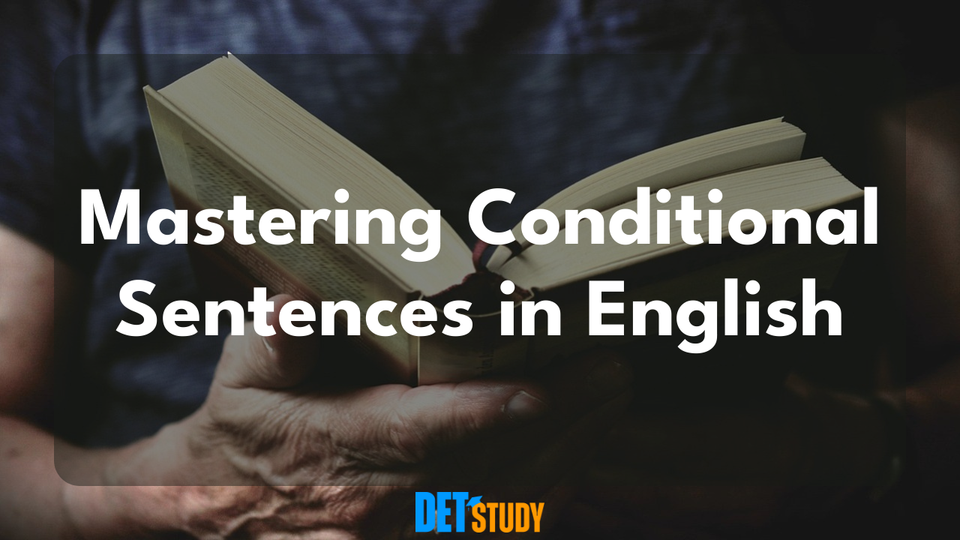玩转倒装条件句:以“Had”开头的句子威力无穷

过去完成时详解
过去完成时详解
过去完成时描述的是在另一个过去事件发生之前已经完成的动作。它由“had”后接动词的过去分词构成。这个时态对于表示事件序列或一个动作在另一个动作开始之前就已结束至关重要。⏳
Duolingo English Test 的有效口语策略结构
- Subject + had + past participle
例句
-
She had finished her work before the meeting started. - 在会议开始之前,她的工作就已经完成了。
-
By the time we arrived, the movie had already begun. - 在我们到达之前,电影就已经开始了。
-
They had eaten by the time we called them. - 在我们给他们打电话之前,他们就已经吃过饭了。
语境用法
这个时态能清晰地说明叙事中的时间线。例如,“When Sarah entered the room, everyone had already left”意味着在莎拉到来之前,所有人都已经离开了,强调了她的迟到。
更多例句
- I had visited that museum once before it closed down.
解释了参观发生在博物馆关闭之前。
-
After he had spent all his money, he realized he had forgotten his wallet.
表明花钱和忘记都发生在过去某个意识到来之前。
练习句
- Before they reached the destination, they had lost their way.
- Had you finished your homework before she arrived?
- They had never heard such good news in their lives.
掌握过去完成时,通过为过去的事件铺垫并明确它们的顺序,确保清晰的沟通。练习有助于建立信心。💡
在句子中使用“Had”
“had”在过去完成时中至关重要,它用于表示在另一个过去事件发生之前已完成的动作。这有助于学习者掌握复杂的句子结构。
-
Had you ever been to Italy before your trip last summer? - 询问是否在去年夏天的那次旅行之前去过意大利。
-
They had completed the project before the deadline. - 表明项目提前完成。
-
She realized she had left her phone at home after she arrived at the office. - 手机在到达办公室并意识到之前就已落下。
-
Had the students studied thoroughly, they might have passed the exam.
- 暗示如果学习得更彻底,考试结果可能会有所不同。
这些例子突出了“had”在排序过去事件中的重要性。练习各种句子可以提高理解和使用能力。✅
避免常见的“Had”错误
学生在使用过去完成时时常犯特定错误。以下是如何避免这些错误的方法:
用“Had”代替“Have”或“Has”
“had”用于过去完全完成的动作,且发生在另一个过去动作之前。不要将它用于与现在相关的动作。
- 错误: She had finished her homework so she is going out now.
- 正确:: She has finished her homework so she is going out now.
在事件顺序已明确时过度使用“Had”
当像“after”这样的连词已经使事件顺序清晰时,避免使用“had”。
- 错误:: After I had eaten breakfast, I left for school.
- 正确:: After I ate breakfast, I left for school.
在疑问句中错误放置“Had”
在过去完成时疑问句中,“had”应置于主语之前。
- 错误:: Did you had finished the report before the meeting?
- 正确:: Had you finished the report before the meeting?
将过去完成时与一般过去时的时间短语一起使用
不要将“had”与明确表示一般过去时的时间状语一起使用,例如“last year”。
- 错误:: I had met him last year.
- 正确:: I met him last year.
在涉及两个过去动作时忘记使用“Had”
当提及两个过去动作时,对较早发生的那个使用“had”。
- 错误:: She was happy because she received the letter.
- 正确:: She was happy because she had received the letter.

在条件句中省略“Had”
在关于过去事件的条件句中,“had”表示未实现的条件。
- 错误:: If I knew you were coming, I would have waited.
- 正确:: If I had known you were coming, I would have waited.
注意这些常见错误能提高使用“had”时的清晰度和准确性。
以“Had”开头句子
以“had”开头句子通常出现在过去完成时结构中,用于强调或设定一个过去的条件。🚀
在条件句中设定条件
这在第三类条件句中很常见,用于表示与过去事实相反的情况。
- 例: Had I known about the meeting, I would have attended.
强调事件顺序
使用“had”来强调一个事件发生在另一个过去事件之前。
- 例:: Had they checked the weather forecast, they wouldn’t have been surprised by the storm.
使用倒装句以达到文学或正式效果
在正式写作中,将“had”置于主语之前会增加正式感或戏剧性。
- 例:: Had the explorers not turned back, they might have discovered the island first.
突出过去的遗憾或错失的机会
以“had”开头强调了过去可能导致不同结果的选择。
- 例:: Had I invested in that company, I would be wealthy now.
以“had”开头句子通过阐明过去的背景或错过的机会,能使叙述更深入。
练习你的技能
这些练习将帮助你掌握如何在句首使用“had”,特别是在条件句或正式语境中。使用“had”改写句子,以开始或完成条件。
练习1:条件句
将“if-clauses”转换为以“had”开头。
-
If they had known about the sale, they would have bought the sofa. - 修改后: Had they known about the sale, they would have bought the sofa.
练习2:事件顺序
使用“had”强调事件顺序。
-
They did not miss the bus because they woke up early. - 修改后: Had they not woken up early, they would have missed the bus.
练习3:遗憾或错失的机会
使用“had”表达过去的遗憾。
-
If I invested in real estate earlier, I would be richer now. - 修改后: Had I invested in real estate earlier, I would be richer now.
练习4:正式或戏剧性强调
使用“had”来达到正式或戏剧性的效果。
-
The merger would have succeeded if the companies collaborated more effectively. - 修改后: Had the companies collaborated more effectively, the merger would have succeeded.
练习这些题目有助于你理解以“had”开头句子如何改变语气和含义,尤其对于未实现的过去条件或令人遗憾的事件。
DET Study提供超过15,000道侧重于形容词和副词的练习题,以强化您的语法。定期练习能让您为 Duolingo English Test 做好准备,增强信心和准确性,帮助您取得理想分数。
🎯 需要更多练习?访问 DETStudy.com 获取专家资源、超过15,000道练习题以及由AI驱动的写作和口语反馈。

